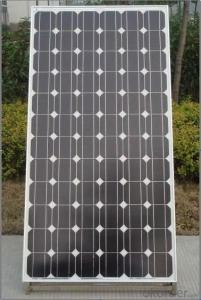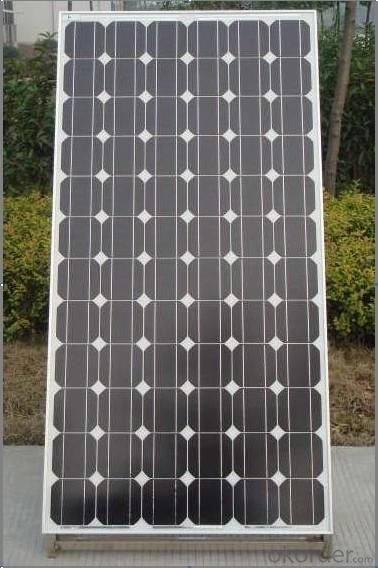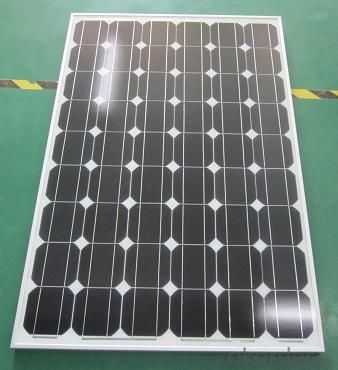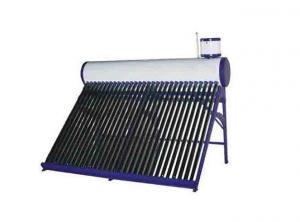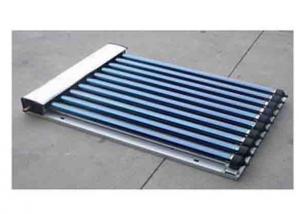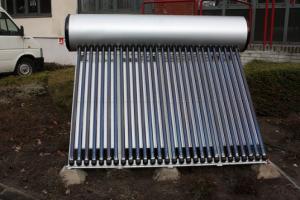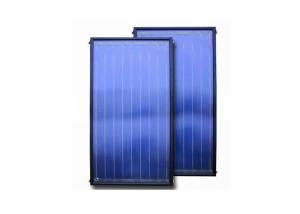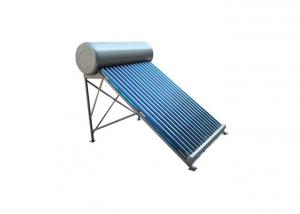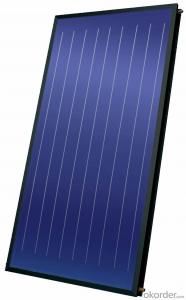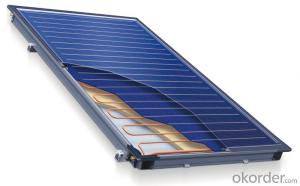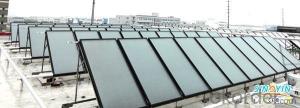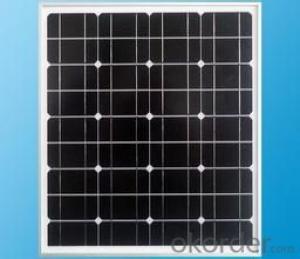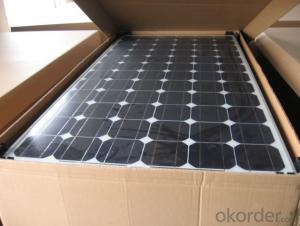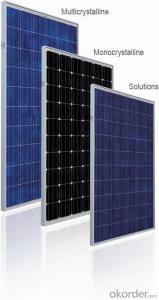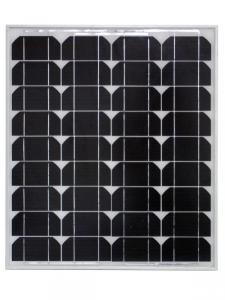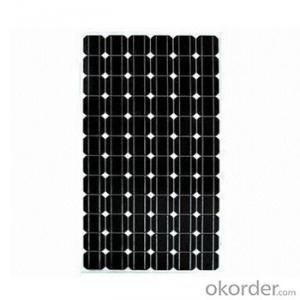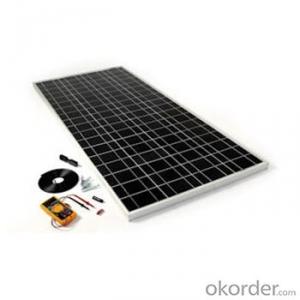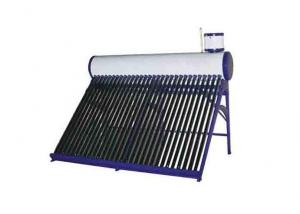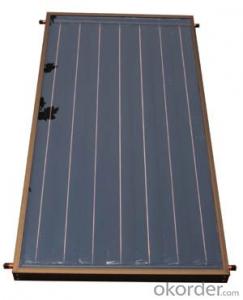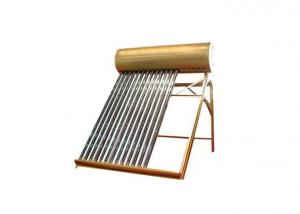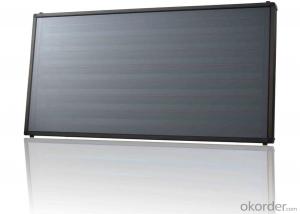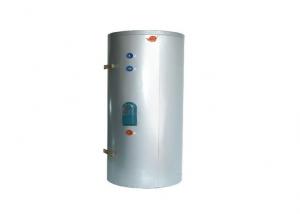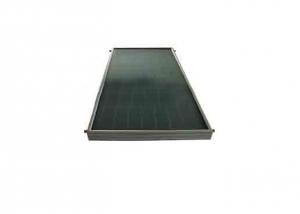Mars Solar Collectors - Solar Photovoltaic Monocrystalline Series Panels
- Loading Port:
- Tianjin
- Payment Terms:
- TT OR LC
- Min Order Qty:
- 1 pallet
- Supply Capability:
- 100000000 pallet/month
OKorder Service Pledge
OKorder Financial Service
You Might Also Like
Product Description:
Solar Monocrystalline Series Panels
Introduction of Solar Monocrystalline Series Panels
CNBM Solar photovoltaic (PV) Panel is designed for large electrical power requirements. It is the optimal choice for both on-grid and off-grid power systems. CNBM Solar panel offers high performance of power per square foot of solar array. Monocrystalline silicon(c-Si): often made using the Czochralski process. Single-crystal wafer cells tend to be expensive, and because they are cut from cylindrical ingots, do not completely cover a square solar cell module without a substantial waste of refined silicon. Hence most c-Si panels have uncovered gaps at the four corners of the cells.
Characteristics of Solar Monocrystalline Series Panels
I Solar Cell : High efficiency crystalline solar cell. Even if under the weak light, the solar module can produce maximum power output.
II Tempered glass (toughened glass): Anti-reflecting coating and high transmission rate glass increase the power output and mechanical strength of solar module.
III EVA and TPT: Using high quality EVA and TPT to prevent destroying and water.
IV AI frame: Without screw, corner connection. 6 holes on the frame can be installed easily.
V Junction box: Multi function junction box with water proof.
VI Long lifetime: ≥25 years; Less power decrease
VII Good performance of preventing from atrocious weather such as wind and hails.
VIII Resisting moisture and etching effectively, not effected by geology.
Standard Test Conditions of Solar Monocrystalline Series Panels
The opto-electrical specifications shown below are stabilized values being measured at Standard Test Conditions, Irradiance: 1000W/m2, Spectrum: AM1.5 at 25°C, The info below is subject to manufacturing tolerances. Where appropriate minutes of measurement are available and are used for the dimensioning of the installation.
Advantages of Solar Monocrystalline Series Panels
• CNBM Solar performance guarantees for 25 years
• 12 years guarantee for workmanship
• Timeliness of delivery
CNBM International Corporation's products including Monocrystalline Solar Panel, Polycrystalline Solar Panel have received and enjoyed famous reputation in many countries and regions in the world .As a solar panel supplier in China, we strive to provide our customers with excellent service, superior products and unmatched value.
Characteristics of Solar Monocrystalline Series Panels
Max Power Voltage Vmp (V) | 18.4V | 17.6V |
Max Power Current Imp (A) | 6.52A | 7.39A |
Open Circuit Voltage Voc (V) | 23.0V | 22.2V |
Short Circuit Current Isc (A) | 6.97A | 7.90A |
Max Power Pm (W) | 120W | 130W |
Temperature Coefficient of Cells
NOCT | 47℃±2℃ |
Temperature Coefficients of Isc (%/℃) | 0.064 |
Temperature Coefficients of Voc (%/℃) | -0.33 |
Temperature Coefficients of Pmp (%/℃) | -0.45 |
Mechanical Data Solar Monocrystalline Series
Power | 120W/130W |
Dimension | 1190/1470×670×30mm |
Weight | 9.5kg/11.7kg |
Tolerance | ±3% |
The dimension of the modules can be changed according to the demand of clients
Limits
Operating Temperature | –40 °C to +85°C |
Storage Temperature | –40 °C to +85°C |
Max System Voltage | 700V |
Guarantee Solar Monocrystalline Series Panels
Products Guarantee | 10 yrs free from defects in materials and workmanship |
Performance Guarantee | No less than 90% within 10yrs and no less than 80% within 25yrs |
Certificates | IEC, ISO, TUV, CE |
FAQ
We have organized several common questions for our clients,may help you sincerely:
1. What’s price per watt?
A: It’s depends on the quantity, delivery date and payment terms of the order. We can talk further about the detail price issue. Our products is high quality with lower price level.
2. Can you tell me the parameter of your solar panels?
We have different series of cells with different power output, both from c-si to a-si. Please take our specification sheet for your reference.
3. How do you pack your products?
We have rich experience on how to pack the panels to make sure the safety on shipment when it arrives at the destination.
4. Can you do OEM for us?
Yes, we can.
5. How long can we receive the product after purchase?
In the purchase of product within three working days, We will arrange the factory delivery as soon as possible. The perfect time of receiving is related to the state and position of customers. Commonly 7 to 10 working days can be served.
- Q: Can solar collectors be used in wind farms?
- No, solar collectors cannot be used in wind farms as they are specifically designed to harness solar energy and not wind energy. Wind farms utilize wind turbines to convert wind energy into electricity.
- Q: Can solar collectors be used for heating research facilities?
- Yes, solar collectors can be used for heating research facilities. They can harness the sun's energy to provide heat through various systems such as solar water heaters or solar air heating systems. This renewable energy source can help reduce reliance on fossil fuels and contribute to a more sustainable heating solution for research facilities.
- Q: Are solar collectors suitable for off-grid living?
- Yes, solar collectors are highly suitable for off-grid living. They provide a reliable and sustainable source of energy, allowing individuals to generate their own electricity and heat without relying on traditional power grids. Solar collectors are efficient, cost-effective, and environmentally friendly, making them an ideal choice for off-grid living where access to conventional energy sources may be limited or unavailable.
- Q: Are there any noise concerns associated with solar collectors?
- Yes, there are typically no noise concerns associated with solar collectors. Unlike traditional energy sources such as generators or turbines, solar collectors do not have moving parts that generate noise.
- Q: Can solar collectors be used for heating theaters?
- Yes, solar collectors can be used for heating theaters. Solar collectors, such as solar thermal panels, can efficiently capture sunlight to generate heat. This heat can then be circulated through a heating system to warm up the theater space. Utilizing solar collectors for heating can reduce energy costs and decrease the environmental impact of theater operations.
- Q: How long does it take for solar collectors to pay for themselves?
- The payback period for solar collectors, also referred to as the time it takes for them to pay for themselves, can vary due to several factors. These factors include the initial cost of the solar collectors, their energy generation capacity, the cost of alternative energy sources, and any financial incentives or tax credits available. On average, solar collectors typically have a payback period ranging from 10 to 20 years. However, this duration can be shorter or longer depending on the specific circumstances. In areas with high electricity costs or abundant sunlight, the payback period tends to be shorter, usually around 5 to 10 years. Conversely, regions with lower electricity rates or less favorable solar conditions may experience longer payback periods, often exceeding 20 years. It is important to consider the long-term advantages of solar collectors beyond the payback period. Once the initial investment is recovered, solar collectors can continue generating electricity for many additional years, potentially reducing or eliminating utility bills. This can lead to significant savings over the system's lifespan. Furthermore, solar collectors contribute to the reduction of carbon emissions and the promotion of sustainability. They offer clean energy, aid in combating climate change, and reduce reliance on fossil fuels. Taking into account these environmental benefits, the payback period becomes just one aspect of the overall value provided by solar collectors. To accurately determine the payback period in a specific situation, it is advisable to seek guidance from solar professionals or financial advisors who can evaluate local conditions, energy consumption, and available incentives. They can provide a more precise estimate based on the specific factors involved.
- Q: Can solar collectors be used for heating event venues and theaters?
- Yes, solar collectors can be used for heating event venues and theaters. Solar thermal systems can provide a sustainable and cost-effective solution for heating large spaces by harnessing the sun's energy to heat water or air. The collected heat can then be distributed throughout the venue or theater using radiators, underfloor heating, or air ducts, ensuring comfortable temperatures for the audience and performers.
- Q: Can solar collectors be used in data centers?
- Yes, solar collectors can be used in data centers. By harnessing solar energy, data centers can reduce their reliance on traditional electricity sources and lower their carbon footprint. Solar collectors can generate renewable energy to power the data center's operations and provide a sustainable solution for their energy needs.
- Q: Can solar collectors be installed on a flat roof?
- Yes, solar collectors can be installed on a flat roof.
- Q: Can solar collectors be used for heating parking structures?
- Yes, solar collectors can be used for heating parking structures. Solar collectors, such as solar thermal panels or air collectors, can harness the sun's energy and convert it into heat, which can be used for heating purposes. By installing solar collectors on parking structures, the heat generated can be utilized to warm the interior spaces, reducing the need for traditional heating systems and promoting energy efficiency.
Send your message to us
Mars Solar Collectors - Solar Photovoltaic Monocrystalline Series Panels
- Loading Port:
- Tianjin
- Payment Terms:
- TT OR LC
- Min Order Qty:
- 1 pallet
- Supply Capability:
- 100000000 pallet/month
OKorder Service Pledge
OKorder Financial Service
Similar products
Hot products
Hot Searches
Related keywords
